What are the most common injuries for weightlifters and powerlifters? Student turns passion into research
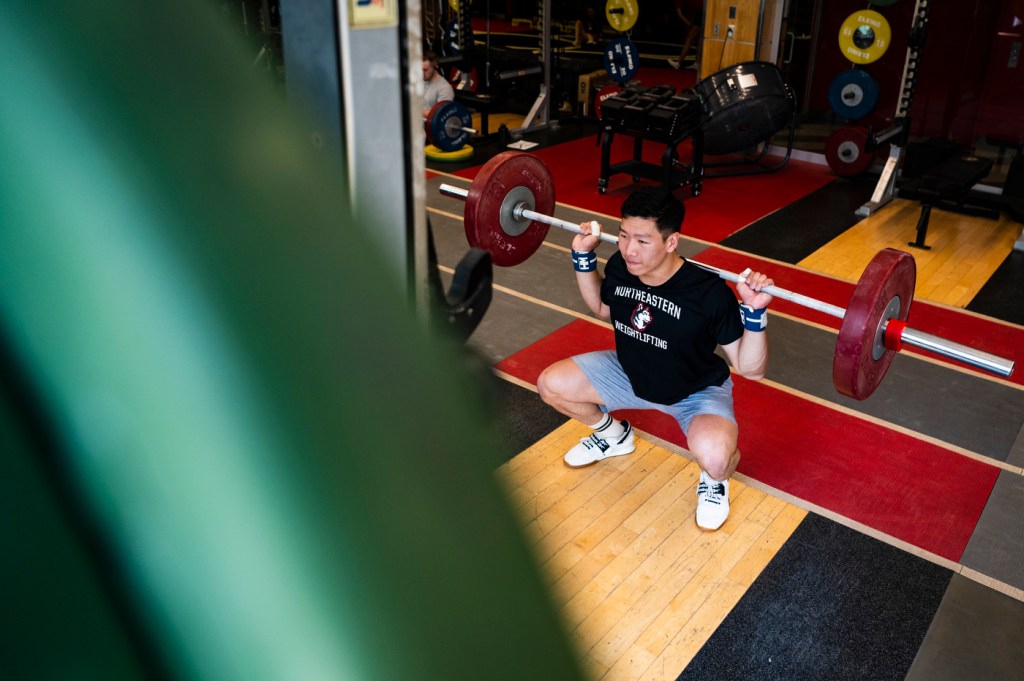
Matthew Tung fell in love with the sport of Olympic weightlifting when he was growing up in Hong Kong.
In the fall of 2015, as a freshman in high school, he began lifting weights. By the next year he was in his first competition—winning it.
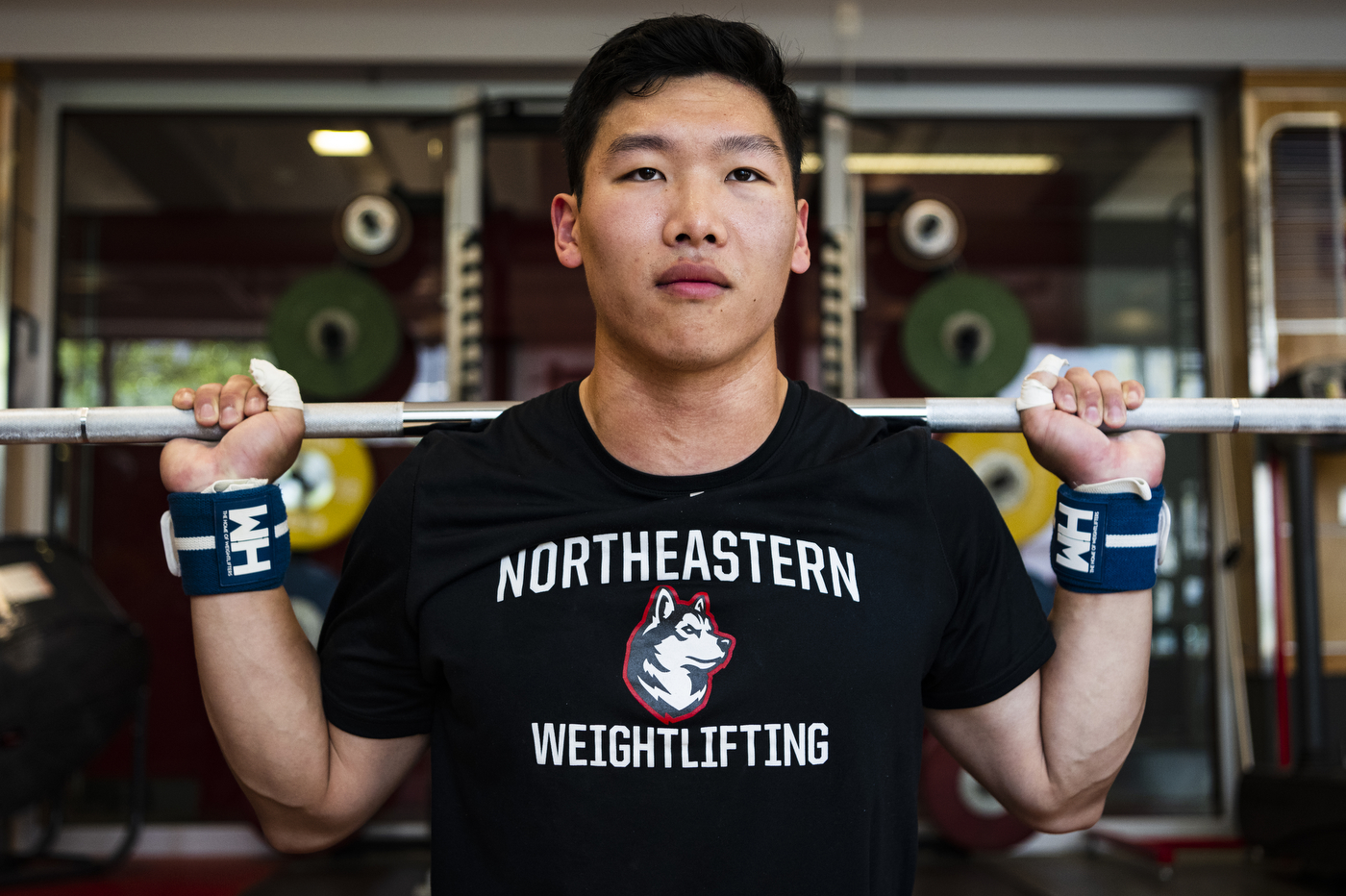
Tung started raising close to 400 pounds over his head when he was 16 years old. He now competes with over 600 pounds. Developing techniques of the sport, he says, takes years to develop.
When he came to the U.S., the sport, which is popular in other parts of the world, had not gained much traction here—stemming his ability to compete. He was determined to change that at Northeastern University.
The recent graduate with a health science degree founded the Olympic weightlifting team at Northeastern two years ago. Starting the team was difficult because he had to convince the university that it was a different strength sport from powerlifting, a similar but different activity.
“But we got some interest, we got some coaches, and now we got some scholarships from the USA Weightlifting organization,” Tung says.
This year, the team only had three people compete. But other members came along to cheer on their teammates and experience the weightlifting event.
“Hopefully, in a couple of years, they’ll be there,” Tung says.
Tung’s experience and passion for the sport led him to focus his final capstone on weightlifting. He took an in-depth look at the injuries most commonly experienced by professional weightlifters. When the most common injuries are labeled, it makes it easier for athletes to prevent them.
With the help of his professor, Alexandre Lopes, a clinical professor in Northeastern’s Department of Physical Therapy, Movement and Rehabilitation Sciences, Tung worked on an updated systematic review—which summarizes the results of research papers on the topic. The last review was done in 2017.
Powerlifting and Olympic weightlifting are two different sports with a common goal of lifting as much weight as possible. Olympic weightlifting consists of both lifts combined—snatch and clean and jerk. The main goal of the sport is to move a weighted bar from the floor to over your head in one fluid motion.
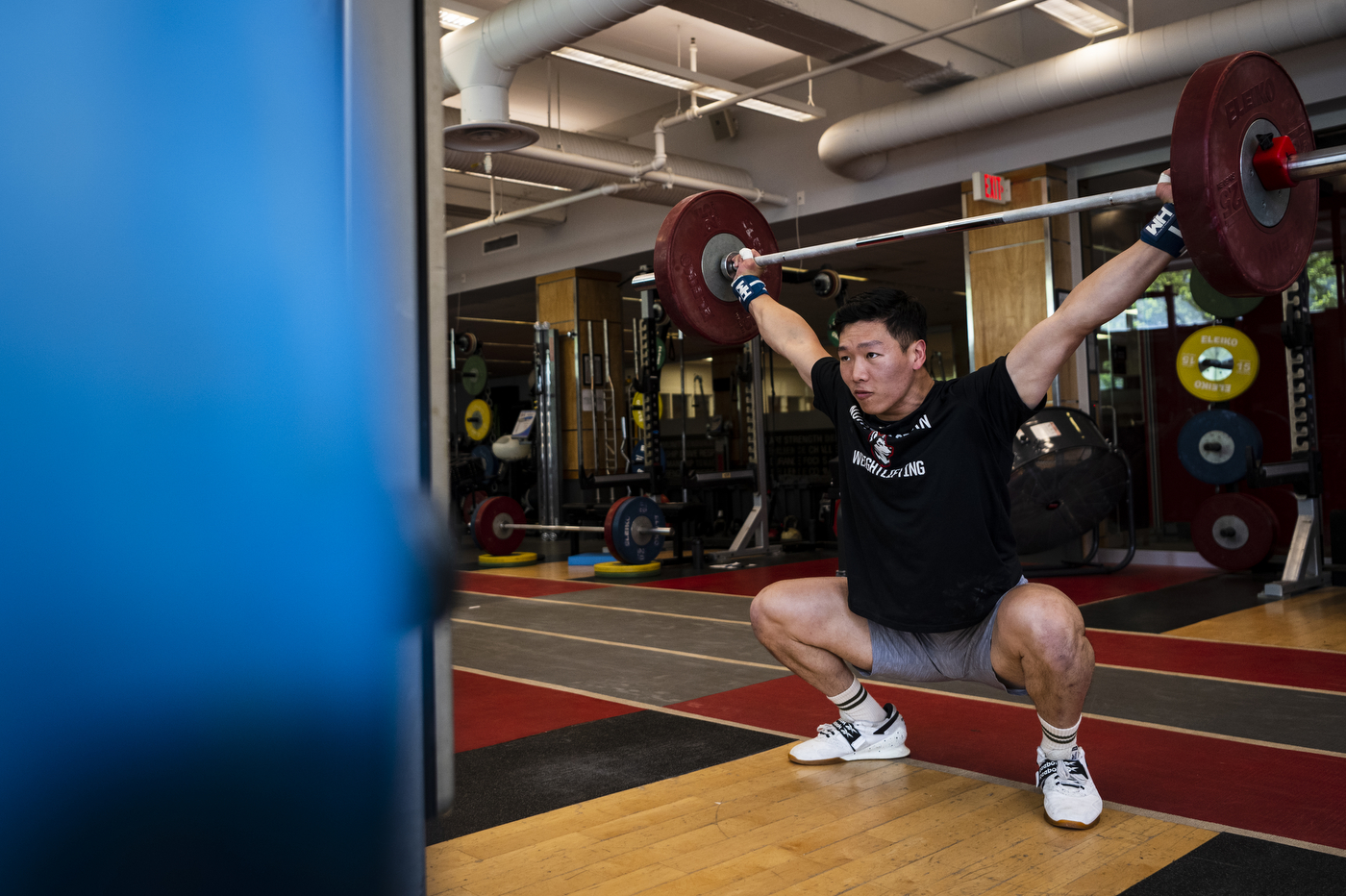
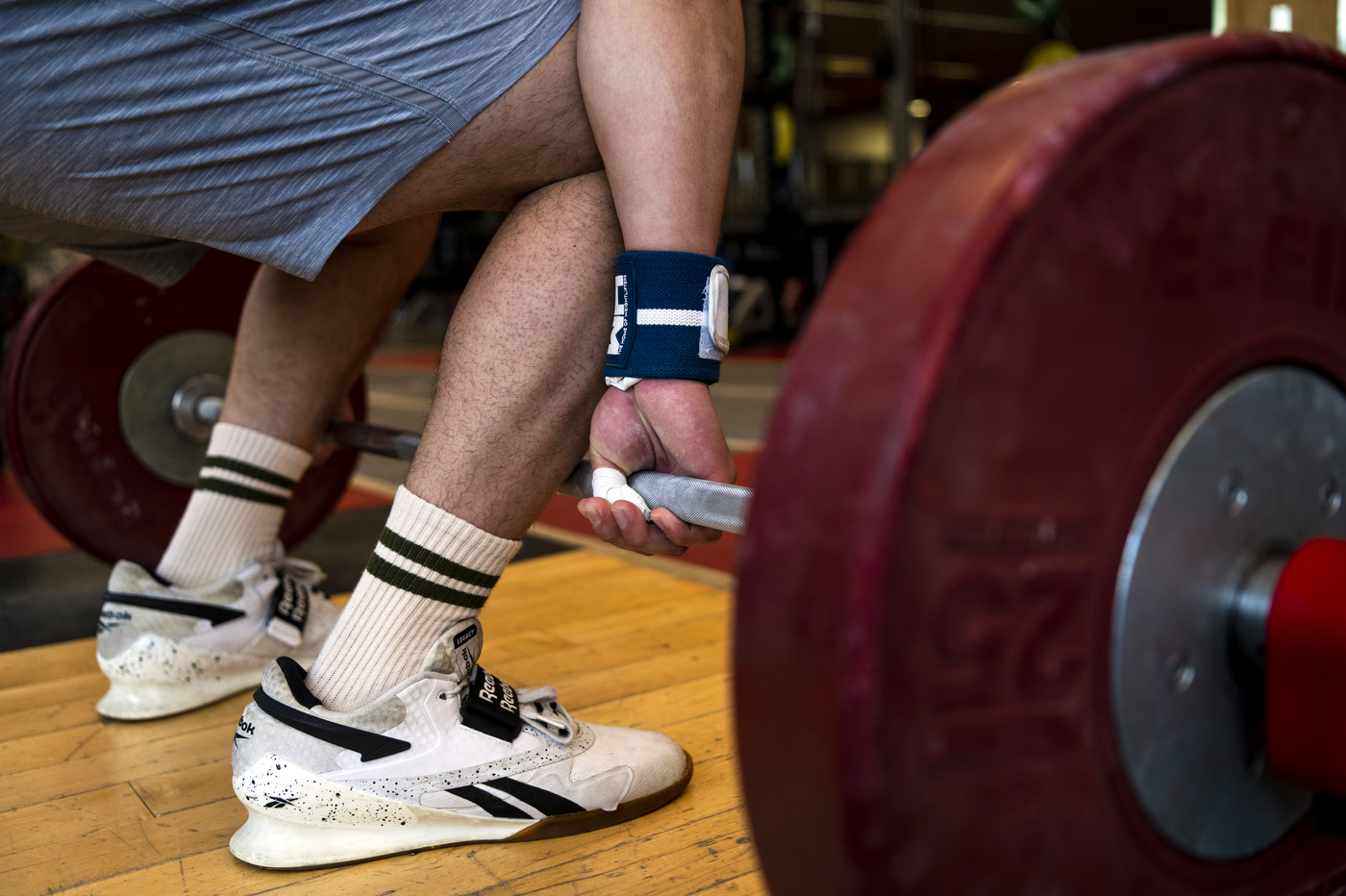
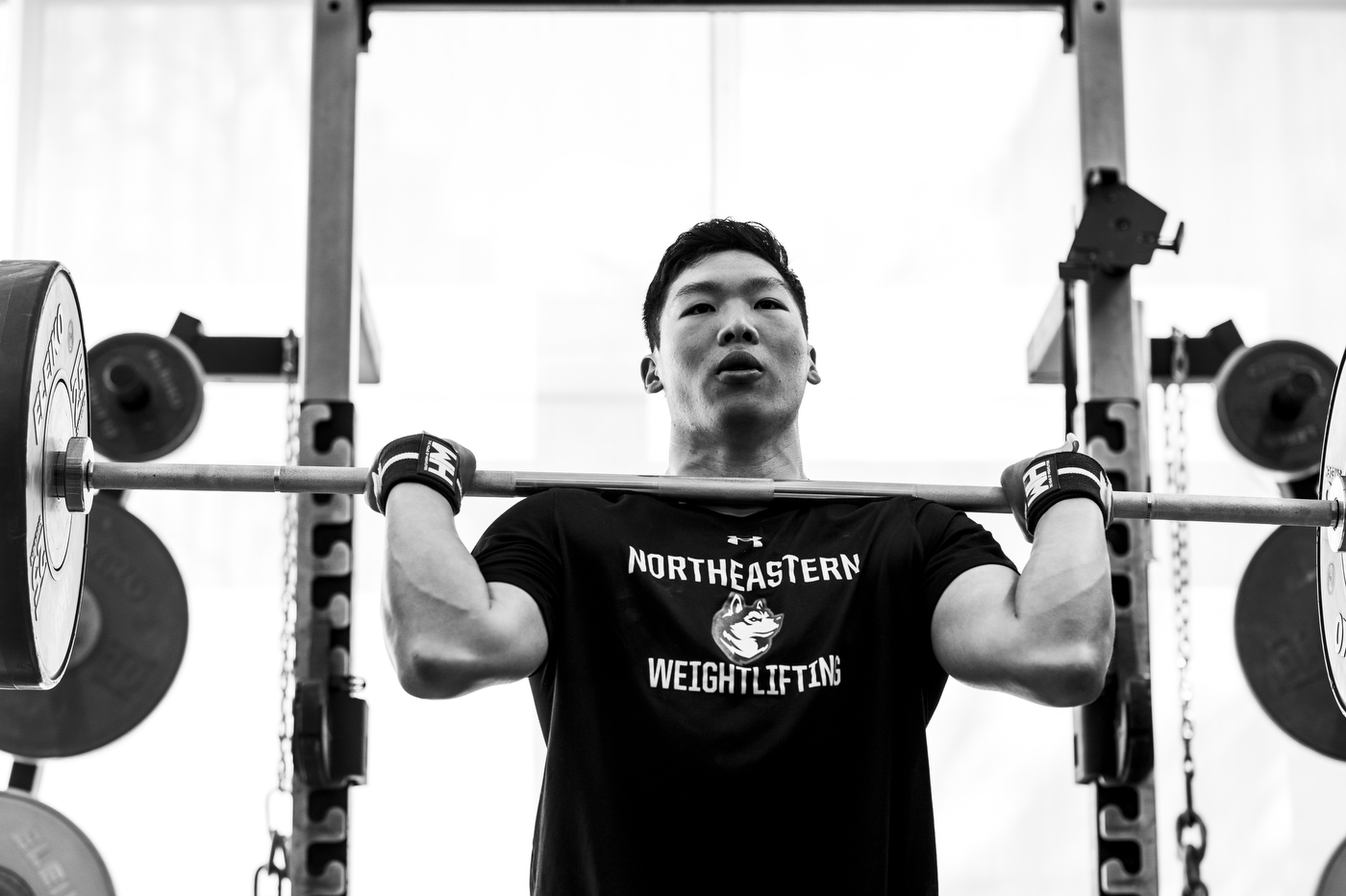
The sport is not as popular in the U.S. as in European or Asian countries, Tung says.
In powerlifting, three events involve a loaded barbell: the squat, bench press and deadlift.
Powerlifting is a lot more popular because the barrier to entry is much lower, Tung says. After all, weightlifting requires special equipment and space to drop a bar from over your head.
“If you did that in Marino (Recreation Center), you’d probably get kicked out,” he says.
In weightlifting, the knee was the most common injury, whereas, in powerlifting, it was the lower back and pelvic area. The difference, Tung says, is because of the biomechanics of the different lifts.
In both sports, the athlete has to squat. However, in weightlifting—because the movement requires the bar to go over the head, the athlete needs to squat deeply—putting the joints of the knee to the end of their ranges.
In powerlifting, the athlete is “cheating physics” by lifting the most weight in the shortest distance possible—eliminating the need to go all the way down in the squat—shifting the load to the hips.
The study also found that pelvic floor dysfunctions were prevalent in both sports. Pelvic floor muscles are the connective tissues that support important organs in the pelvis area, such as the bladder, large intestine and internal reproductive organs. Pelvic floor dysfunction occurs when there is too much or too little tension on the pelvic floor muscles, contributing to urinary incontinence, constipation and pain in the lower back and pelvic region.
Athletes who experience pelvic floor dysfunctions have a lot of limitations in their training and competitions because of embarrassment or fear that an incident such as gas or urinary leakage will happen again.
“A lot more research is needed there because of how prevalent it was,” Tung says. “I’ve also seen it firsthand in a couple of competitions—especially for women.”
When one gets into weightlifting or powerlifting, the first thoughts include lifting barbells—training the back, glutes and arms. Athletes often overlook how the pelvic muscles are used and are often left untrained, says Tung.
Tung has taken what he learned from his study and applied it to his training. After finding out that the knee is one of the most commonly injured parts, he started doing prehab of the knee before training and bought some knee wraps he applies when he is training.
Weightlifting in cross-training is becoming more popular, especially with the growth of CrossFit, which emerged over two decades ago. However, it is difficult to take measures on those athletes because it is hard to pinpoint what is causing the injury—running, biking or lifting weights.
Strengthening muscles is essential, Lopes says. Especially if the person is not young—it increases balance, helps a person keep their bone density, and builds mobility.
“The benefits of weightlifting or powerlifting that strengthens muscles is one of the basic elements for good health,” Lopes says.
Beth Treffeisen is a Northeastern Global News reporter. Email her at b.treffeisen@northeastern.edu. Follow her on Twitter @beth_treffeisen.






